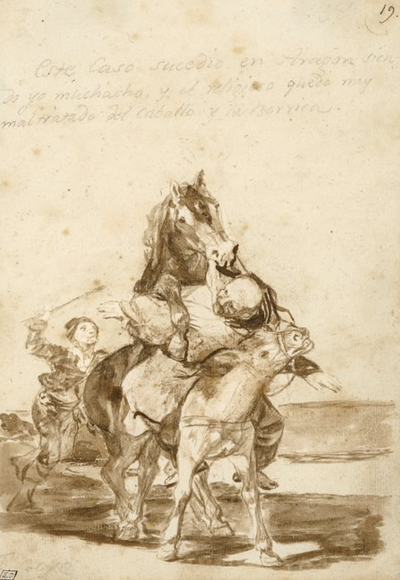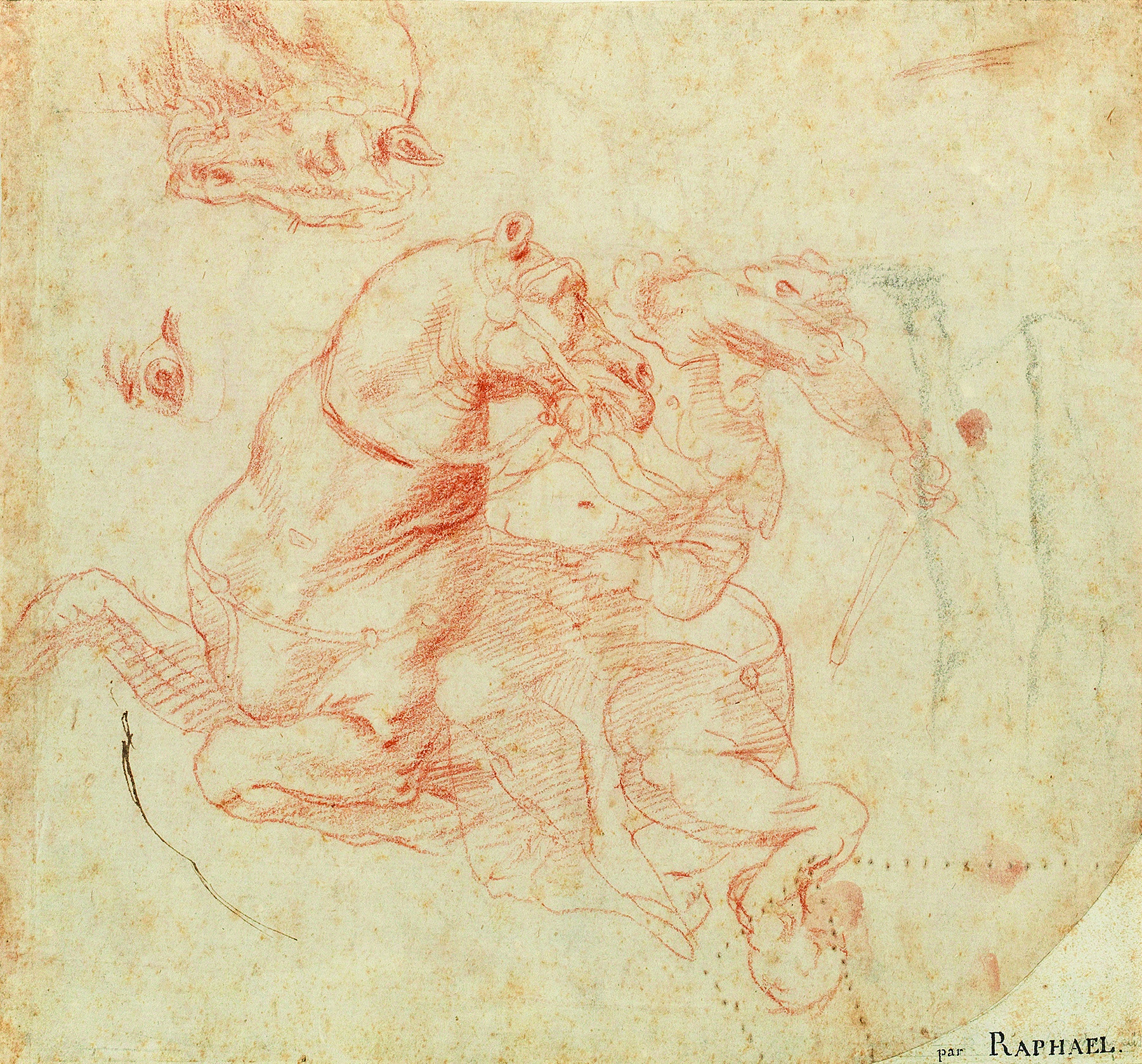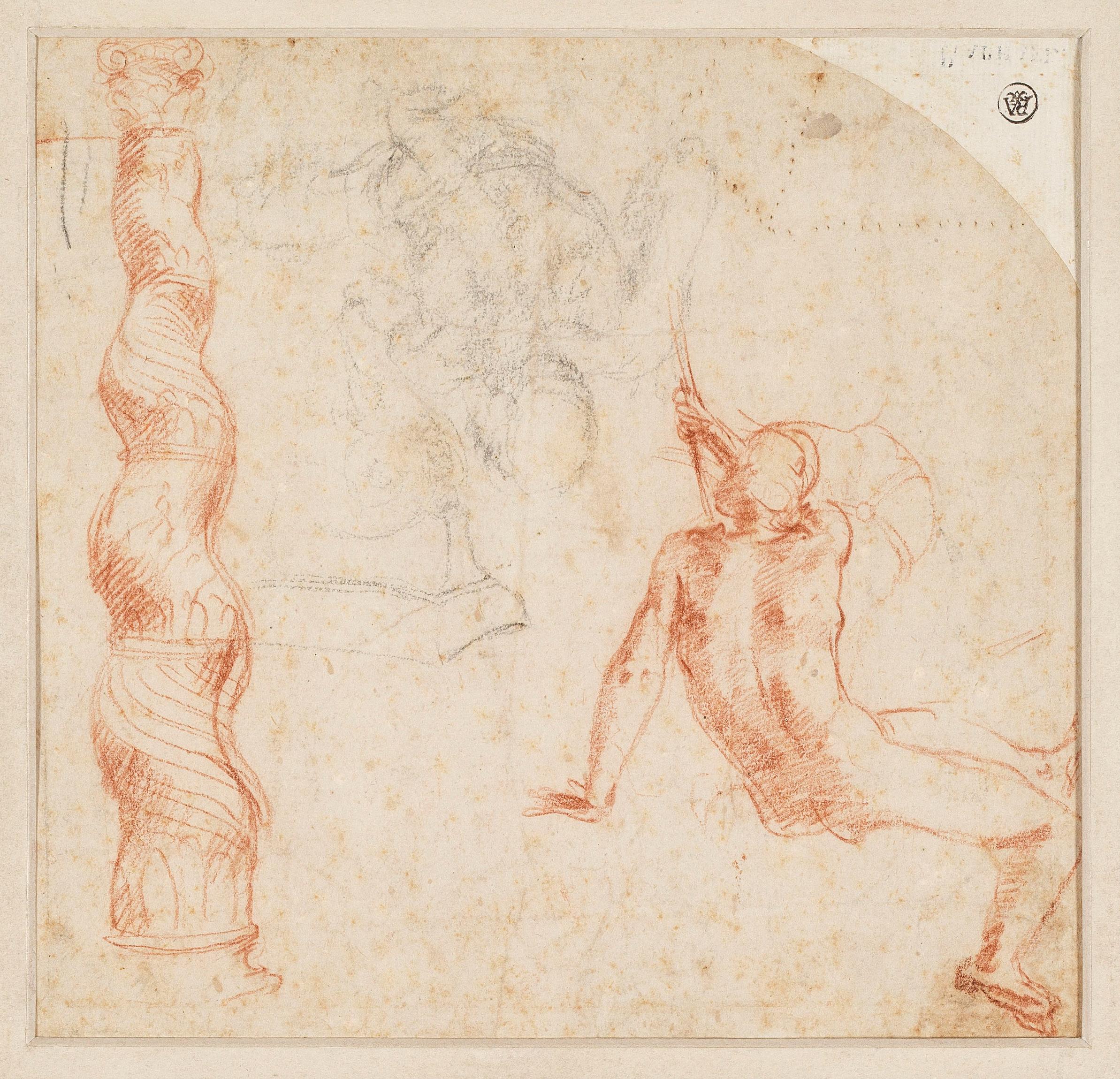The top-selling Old Master drawings of the year
[03/11/2023]Every year, unexpected treasures emerge from the past on the auction market, such as MICHELANGELO’s (1475-1564) youthful drawing of A nude man (after Masaccio) with two figures behind that attracted determined bidding when it sold for $24.3 million in Paris last year. It was the best result in 2022 in the quiet but nonetheless exciting Old Master drawings segment.
This year, the segment’s highest bid was hammered in China when an extremely rare Calligraphy in regular script by 13th century artist Zhao Mengfu (1254-1322) fetched $25 million at Poly International in Beijing. So far this year, Old Master drawings have already generated a higher global auction turnover total than last year, and this is primarily due to the recovery of the Chinese market with Chinese masters accounting for the segment’s top 19 results in 2023. The top Western artist in the ranking (in 20th place) is Francisco de Goya and Lucientes whose burlesque brown-ink drawing of A horse covering a she-donkey, while straddling a monk riding it, reached $3.2 million last May at Christie’s in New York.

Goya, A horse covering a she-donkey, while straddling a monk riding
The global turnover from Old Master drawings has been driven up by Chinese Masters whose works have by far the dominated Western masters in number and price levels.
Behind Goya – and approximately 70 Chinese results – this year’s second top-selling drawing by a Western Old Master is by the hand of Wenceslaus Hollar von Prachna, a 17th century artist known for having popularized the technique of color engraving in England. His drawings are so rare that one of them, View across the rooftops of Lambeth Palace, fetched $819,000 (10x its high estimate) at the beginning of 2023 at Sotheby’s in New York. This new auction record for a work by Wenzel Hollar illustrates the appetite and motivation of collectors to acquire historical rarities.
Further down the ranking at $560,890 (Christie’s London) we have Giovanni Domenico Tiepolo’s black chalk drawing of a Group of Punchinellos examining a sea spider (34.7 x 46.8 cm). A second sheet by Tiepolo – also depicting a group of Punchinellos – exceeded its high estimate at the same sale when it reached $448,700.

Giovanni Domenico TIEPOLO, A group of Punchinellos examining a spider crab
Drawings by Peter Paul Rubens, Johan Wierix, Maarten Jacobsz Van Heemskerck all fetched more than $400,000, and works by John the Baptist Franco, Jean-Antoine Watteau, Rosalba Carriera and Raphaël sold above the $300,000 threshold
A work by Raphaël – whose best auction results for his drawing have twice exceeded $47 million – bold beneath its estimate at Dorotheum auctions in October. Its new owner – whether a collector or a dealer – got a very good deal. The top-selling Western Old Master drawing this autumn, we take a closer look:
The Raphaël drawing offered at Dorotheum
 The Viennese auction house was hoping to repeat its performance of October 2019 when an oil-on-panel painting of the Madonna and Child bearing the mention “circle of Raphaël” triggered strong bidding up to $1.7 million, more than tripling its high estimate. According to some art historians at the time, the painting was possibly by RAPHAEL (1483-1520) himself… in collaboration with the artists in his workshop.
The Viennese auction house was hoping to repeat its performance of October 2019 when an oil-on-panel painting of the Madonna and Child bearing the mention “circle of Raphaël” triggered strong bidding up to $1.7 million, more than tripling its high estimate. According to some art historians at the time, the painting was possibly by RAPHAEL (1483-1520) himself… in collaboration with the artists in his workshop.
Dorotheum clearly hoped to benefit from a similar scenario after the rediscovery of a drawing that could be one of only three Raphaël drawings that have survived (the other two being kept at the Louvre and the Ashmolean Museum in Oxford). Acquired in the 1930s by the scholar and collector Iohan Quirijn van Regteren Altena, the work has already been sold at auction under various attributions including as a work from the “16th century Italian School” at Christie’s in 2015 where it fetched less than $2,000. Last week (October 25), Dorotheum offered the work with an estimate of half a million dollars, but the bidding stopped at $360,000. In any case, given the quality of the drawing, the buyer got a very good deal.
Study for the Battle of the Milvian Bridge: a rider on horseback and horse’s head and eye, depicting a falling horse and rider, is a preparatory sketch for part of the Battle of the Milvian Bridge fresco in the Hall of Constantine within the Vatican’s papal apartments, a scene full of movement and energy, representing the victory of Christianity over paganism. The artist, who died in 1520, did not live to see the completion of his fresco and his student Giulio ROMANO was charged with finishing it. This drawing allows us to appreciate how Raphaël’s workshop functioned, with each sketch sheet being reused several times by himself or his students. It is therefore important not to forget to look at the other side of the drawing which has a series of Studies for the Donation of Constantine (?): a Solomonic column and seated male figures by Polidoro DA CARAVAGGIO (c.1499-1543), a student of Raphaël active in Rome between 1514 and 1527.

Verso of Raphael’s drawing: Studies for the Donation of Constantine (?): a Solomonic column and seated male figures by Polidoro Da Caravaggio




 30.6
30.6
